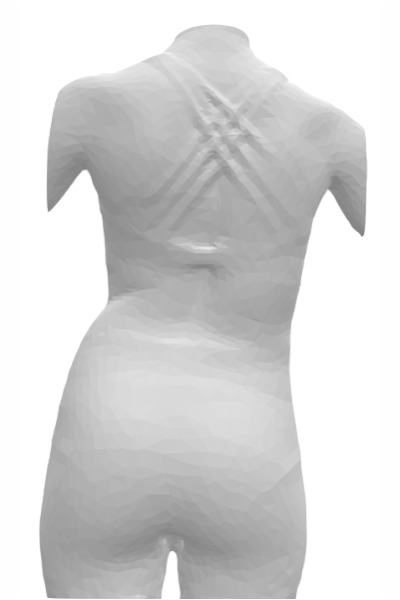Parents looking for the best scoliosis brace should consider several important factors: results, comfort, the potential for curve improvements, and better postural symmetry are among the most important! Chêneau Scoliosis Bracing offers these significant advantages, and more, with studies showing improved results compared to other scoliosis braces.
Chêneau Bracing offers results
- For mild, moderate AND severe scoliosisBrace
- Asymmetric design for a true 3D correction effect
- Has helped many adolescents avoid scoliosis surgery (see results)
- Excellent record of in-brace corrections
- Helps improve posture for a more balanced appearance
- Pressure zones and openings for expansion at spinal concavities work to induce correction and reduce spinal rotation
- Braces created according to a patient’s curve-pattern and flexibility
- Can be used independently or in conjunction with our Scoliosis 3DC® scoliosis exercise program for the best results
Wearability
- Made from a lightweight, moldable polyethylene for improved comfort
- Front closing straps allow for independence
- Open hip design for better mobility and pelvic correction
- Improved stability
- Doesn’t crush the chest to avoid breast distortion during development
- Voids allow for Schroth breathing and expansion rather than compression
- Easier wearability translates to improved compliance.
- Patients who have switched say our brace is easier to wear, put on and take off, breathe in, eat, sit down in etc.
- Adult bracing for postural support and pain relief
Technologically Advanced

- Fast and easy measurement process with 3D scanning technology – no casting!
- Custom-designed according to a patient’s unique curve pattern for the best fit and correction effect.
- Advanced CAD/CAM technology allows for custom creating and eliminates manufacturing variances and human error.
- A non-surgical alternative for scoliosis patients with Cobb angles of 45°, 50° and 55º plus.
- Created and manufactured in the USA
- 24 – 48 hour turnaround because “scoliosis doesn’t wait!”
- Full-time or nighttime bracing available
Why Scoliosis 3DC® for Bracing?
When you or your child become our patient, you become part of the Scoliosis 3DC® family. We are here to guide you every step of the way, well beyond your initial visit!
As a parent of a child with scoliosis, Dr. Moramarco understands what it’s like. After diagnosing his daughter in 2001, he made it his mission to find the best non-surgical treatment for her. This ultimately led him to become the first US practitioner trained in the Schroth Method at the Asklepios Katharina Schroth Clinic in Germany.
Fast forward to today: Dr. Moramarco is a leading Schroth method and Chêneau bracing expert, having traveled to Germany numerous times for extensive training over the years and having fit Chêneau braces on patients in his clinic for the past ten years. There is a distinct advantage to having a Schroth expert create and fit yours or your child’s scoliosis brace. A well-designed brace takes into account the patient’s curve pattern, body mechanics, and flexibility. This hands-on information provides the insights needed to judge how the patient’s scoliotic body will respond to bracing when working in CAD/CAM to create the best scoliosis brace possible for the individual patient.
At Scoliosis 3DC®, we have been treating scoliosis non-surgically on a full-time basis for many years. Many of our team members either have scoliosis or have family members with scoliosis. You won’t find a more experienced, dedicated, and knowledgeable team of caring individuals to help you/your child through your scoliosis journey!
Dr. Moramarco is also an international lecturer, author on the non-surgical treatment of scoliosis and lead editor of Schroth’s Textbook of Scoliosis and Other Spinal Deformities.
We have:
- America’s most experienced & knowledgeable Schroth Method practitioners.
- Chêneau bracing and Schroth exercise available at one location.
- Our one-stop-shop helps eliminate burnout for patients and parents.
- We offer a four-day Chêneau bracing turnaround (from body scan to final fitting).
- A responsive clinical team that works together to help you properly manage scoliosis.
- A safe, comfortable setting where kids are open to learning and accepting their new normal.
- Not a sterile, intimidating, hospital-like environment because having scoliosis and wearing a brace can be stressful.
- We work to alleviate any apprehensions and are sensitive to the psychological impact of bracing on the individual.
- A friendly, optimistic, supportive staff who are all passionate about conservative treatment for scoliosis.
- A clear-cut management plan with guidance and feedback every step of the way.
- A high rate of patient satisfaction.
- Excellent results!

